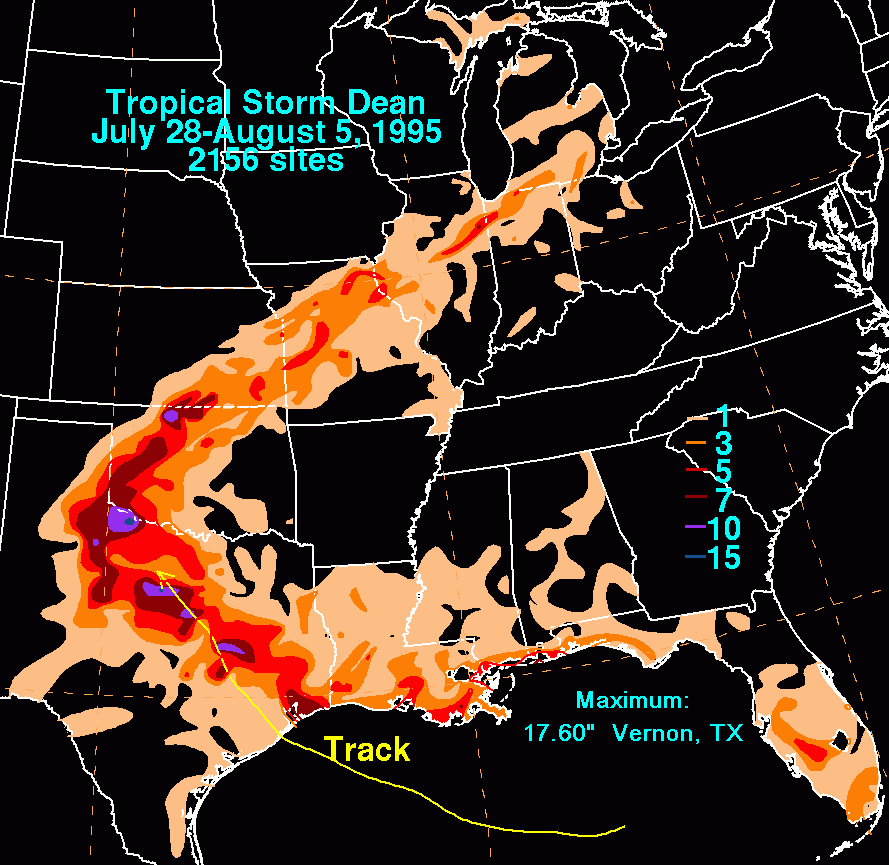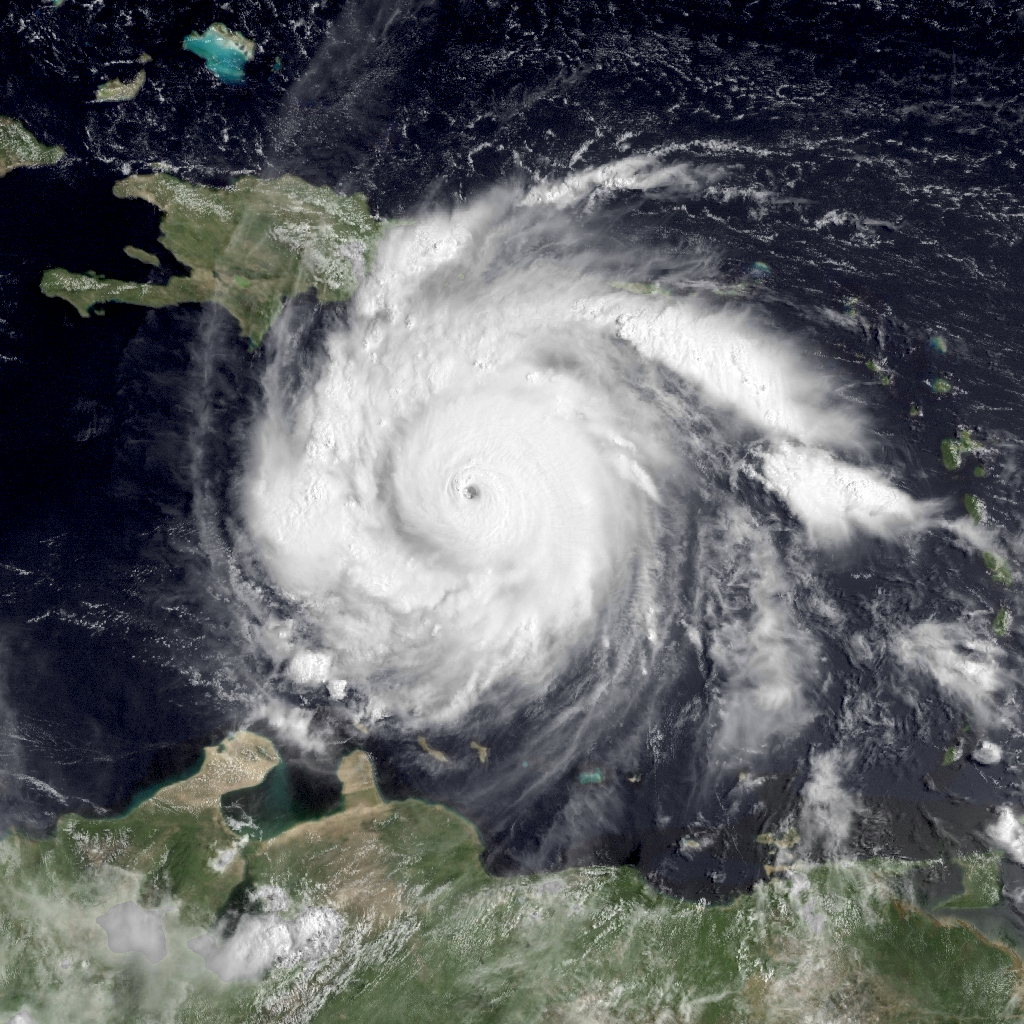|
List Of Tropical Storms Named Dean
The name Dean was used for five tropical cyclones in the Atlantic Ocean. *Tropical Storm Dean (1983), struck the coast of Virginia, causing minor erosion and flooding *Hurricane Dean (1989), passed over Bermuda, causing $8.9 million in damage and 16 injuries *Tropical Storm Dean (1995), caused significant flooding damage to Chambers County, Texas, but 1 death *Tropical Storm Dean (2001), caused $7.7 million in damage to Puerto Rico and minimal damage to the U.S. Virgin Islands * Hurricane Dean (2007), a Cape-Verde hurricane that made landfall in the Yucatan Peninsula at Category 5 strength The name was retired after 2007, and was replaced by ''Dorian'' in the 2013 season. In the Southeastern Indian Ocean: *Cyclone Dean (1980) In meteorology, a cyclone () is a large air mass that rotates around a strong center of low atmospheric pressure, counterclockwise in the Northern Hemisphere and clockwise in the Southern Hemisphere as viewed from above (opposite to an a ... [...More Info...] [...Related Items...] OR: [Wikipedia] [Google] [Baidu] |
Tropical Cyclone
A tropical cyclone is a rapidly rotating storm system characterized by a low-pressure center, a closed low-level atmospheric circulation, strong winds, and a spiral arrangement of thunderstorms that produce heavy rain and squalls. Depending on its location and strength, a tropical cyclone is referred to by different names, including hurricane (), typhoon (), tropical storm, cyclonic storm, tropical depression, or simply cyclone. A hurricane is a strong tropical cyclone that occurs in the Atlantic Ocean or northeastern Pacific Ocean, and a typhoon occurs in the northwestern Pacific Ocean. In the Indian Ocean, South Pacific, or (rarely) South Atlantic, comparable storms are referred to simply as "tropical cyclones", and such storms in the Indian Ocean can also be called "severe cyclonic storms". "Tropical" refers to the geographical origin of these systems, which form almost exclusively over tropical seas. "Cyclone" refers to their winds moving in a circle, whirling round ... [...More Info...] [...Related Items...] OR: [Wikipedia] [Google] [Baidu] |
Tropical Storm Dean (1983)
Tropical Storm Dean caused minor flooding along portions of the East Coast of the United States in September 1983. The seventh tropical cyclone and fourth named storm the 1983 Atlantic hurricane season, Dean developed from a frontal low to the northeast of the Bahamas on September 26. Initially subtropical, it gained characteristics of a tropical cyclone while tracking slowly north-northeastward. By September 27, the system was reclassified as Tropical Storm Dean. While tracking northward on September 28, Dean peaked with winds of 65 mph (100 km/h), shortly before curving west-northwestward and slowly leveling-off in intensity. Eventually, Dean made landfall in Virginia on the Delmarva Peninsula on September 29 as a weakening tropical storm. Dean rapidly weakened over land and was no longer classifiable as a tropical cyclone by early on October 1. Offshore Virginia, swells generated by the storm stranded a tugboat and injured two people. Wa ... [...More Info...] [...Related Items...] OR: [Wikipedia] [Google] [Baidu] |
Hurricane Dean (1989)
Hurricane Dean was a strong tropical cyclone that brought minor effects the United States and Atlantic Canada offshore in early August 1989. The fourth named storm and second hurricane of the 1989 Atlantic hurricane season, Dean formed on July 31 and reached tropical storm status the following day east of the Leeward Islands. Dean brushed the northern Leeward Islands as a Category 1 hurricane on the Saffir–Simpson Hurricane Scale, bringing light rain but producing no damage, before turning northward and striking Bermuda as a Category 2 hurricane. It continued northward before making landfall in southeastern Newfoundland. Dean was initially difficult to forecast; it was thought to pose a possible threat to the Lesser Antilles, and as a result several evacuations occurred, and many hurricane watches and warnings were issued. However, as the storm turned northward, all watches and warnings in the Lesser Antilles were discontinued. As Dean approached Bermuda, a hurricane watch wa ... [...More Info...] [...Related Items...] OR: [Wikipedia] [Google] [Baidu] |
Tropical Storm Dean (1995)
Tropical Storm Dean was a short-lived storm that formed in late July 1995 and lasted into early August. It was the fourth named storm of the 1995 Atlantic hurricane season. It spent most of its life as a tropical depression, and briefly gained tropical storm status before its landfall on the Texas coast on July 30. After landfall, it dissipated over central Texas on August 2. The impacts from Dean were minimal, mainly due to heavy rain in Oklahoma and Texas that caused localized coastal and inland flooding. Two F0 Tornadoes touched down in Texas as a result of Dean's landfall. Also, Twenty families had to be evacuated in Chambers County, Texas, Chambers County, due to flooding in the area. One fatality was recorded as a result of flooding in Oklahoma. Several highways were flooded out in Oklahoma, which impeded travel in the state. In addition approximately $500,000 (1995 U.S. dollars) worth of damage was recorded in the aftermath of Dean. Meteorological history The precursor sys ... [...More Info...] [...Related Items...] OR: [Wikipedia] [Google] [Baidu] |
Tropical Storm Dean (2001)
Tropical Storm Dean was a strong tropical storm that affected at least twelve islands along its path from the tropical Atlantic Ocean to east of Atlantic Canada in August 2001. Dean developed from a tropical wave on August 22 over the Lesser Antilles, and was initially predicted to intensify further to reach hurricane status. However, strong wind shear quickly weakened Dean to cause it to dissipate on August 23. The remnants turned northward, and redeveloped on August 26 to the north of Bermuda. Located over warm waters and in an area of favorable conditions, Dean steadily strengthened while moving to the northeast, and peaked just below hurricane status on August 27 about 465 miles (750 km) southwest of Newfoundland. The storm subsequently weakened over cooler waters, and became extratropical on August 28. The precursor tropical wave dropped heavy rainfall and produced moderate winds throughout the Lesser Antilles, though no serious damage was reported. In Puerto Rico, r ... [...More Info...] [...Related Items...] OR: [Wikipedia] [Google] [Baidu] |
Hurricane Dean
Hurricane Dean was the strongest tropical cyclone of the 2007 Atlantic hurricane season. It was the most intense North Atlantic hurricane since Hurricane Wilma of 2005, tying for eighth overall. Additionally, it made the fourth most intense Atlantic hurricane landfall. A Cape Verde hurricane that formed on August 13, 2007, Dean took a west-northwest path from the eastern Atlantic Ocean through the Saint Lucia Channel and into the Caribbean. It strengthened into a major hurricane, reaching Category 5 status on the Saffir–Simpson hurricane wind scale before passing just south of Jamaica on August 20. The storm made landfall on the Yucatán Peninsula on August 21 at peak intensity. It crossed the peninsula and emerged into the Bay of Campeche weakened, but still remained a hurricane. It strengthened briefly before making a second landfall near Tecolutla in the Mexican state of Veracruz on August 22. Dean drifted to the northwest, weakening into a remnant low which d ... [...More Info...] [...Related Items...] OR: [Wikipedia] [Google] [Baidu] |
Tropical Storm Dorian
The name Dorian was used for two tropical cyclones in the Atlantic Ocean. The name replaced Dean which was retired after the 2007 season. *Tropical Storm Dorian (2013), strong tropical storm that degenerated into an open wave in the middle of the ocean; it organized into a tropical depression once again near the Bahamas, but dissipated shortly after. * Hurricane Dorian (2019), a record-breaking Category 5 hurricane that made a devastating landfall on the Bahamas, and stalled on Grand Bahama for two days, before it turned north and significantly impacted the Southeast U.S. and Atlantic Canada. Regarded as the worst natural disaster to strike the Bahamas. The name was retired after 2019, and will be replaced by ''Dexter'' in the 2025 season. See also * Hurricane Doreen, a similar name which was used in the Eastern Pacific. * List of storms named Durian The name Durian has been used to name two tropical cyclones in the Western Pacific Ocean. The name was submitted by Thailand, ... [...More Info...] [...Related Items...] OR: [Wikipedia] [Google] [Baidu] |
Cyclone Dean (1980)
In meteorology, a cyclone () is a large air mass that rotates around a strong center of low atmospheric pressure, counterclockwise in the Northern Hemisphere and clockwise in the Southern Hemisphere as viewed from above (opposite to an anticyclone). Cyclones are characterized by inward-spiraling winds that rotate about a zone of low pressure. The largest low-pressure systems are polar vortices and extratropical cyclones of the largest scale (the synoptic scale). Warm-core cyclones such as tropical cyclones and subtropical cyclones also lie within the synoptic scale. Mesocyclones, tornadoes, and dust devils lie within smaller mesoscale. Upper level cyclones can exist without the presence of a surface low, and can pinch off from the base of the tropical upper tropospheric trough during the summer months in the Northern Hemisphere. Cyclones have also been seen on extraterrestrial planets, such as Mars, Jupiter, and Neptune. Cyclogenesis is the process of cyclone formati ... [...More Info...] [...Related Items...] OR: [Wikipedia] [Google] [Baidu] |
Atlantic Hurricane Set Index Articles
The Atlantic Ocean is the second-largest of the world's five oceans, with an area of about . It covers approximately 20% of Earth's surface and about 29% of its water surface area. It is known to separate the "Old World" of Africa, Europe and Asia from the "New World" of the Americas in the European perception of the World. The Atlantic Ocean occupies an elongated, S-shaped basin extending longitudinally between Europe and Africa to the east, and North and South America to the west. As one component of the interconnected World Ocean, it is connected in the north to the Arctic Ocean, to the Pacific Ocean in the southwest, the Indian Ocean in the southeast, and the Southern Ocean in the south (other definitions describe the Atlantic as extending southward to Antarctica). The Atlantic Ocean is divided in two parts, by the Equatorial Counter Current, with the North(ern) Atlantic Ocean and the South(ern) Atlantic Ocean split at about 8°N. Scientific explorations of the Atlantic ... [...More Info...] [...Related Items...] OR: [Wikipedia] [Google] [Baidu] |




